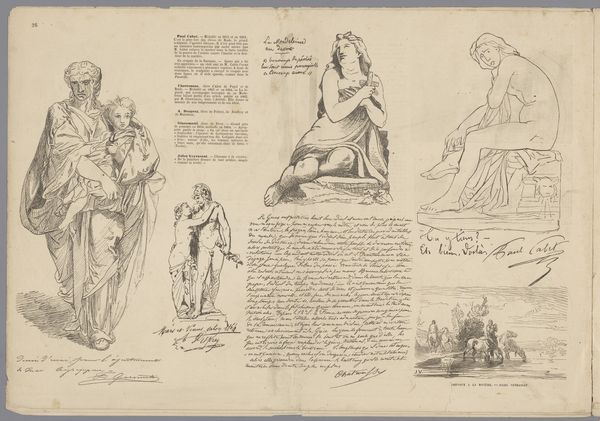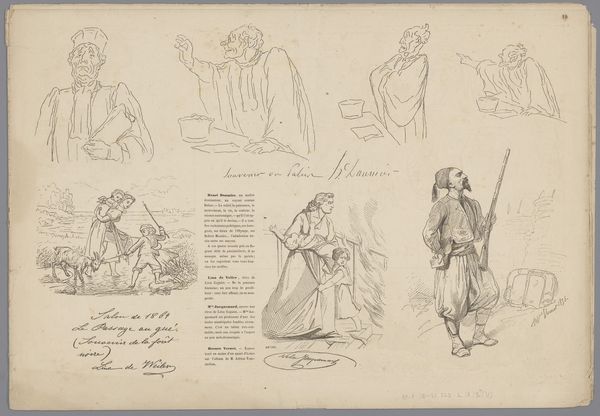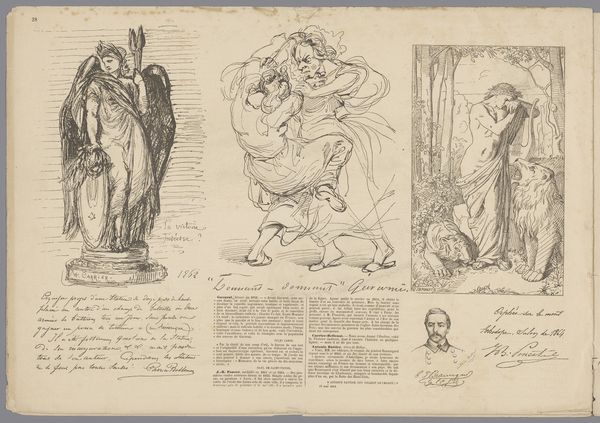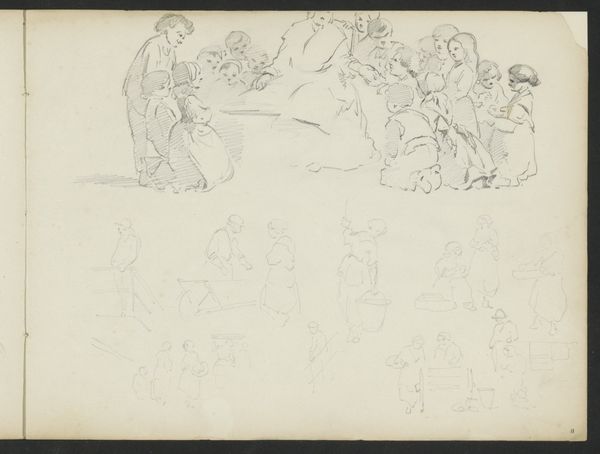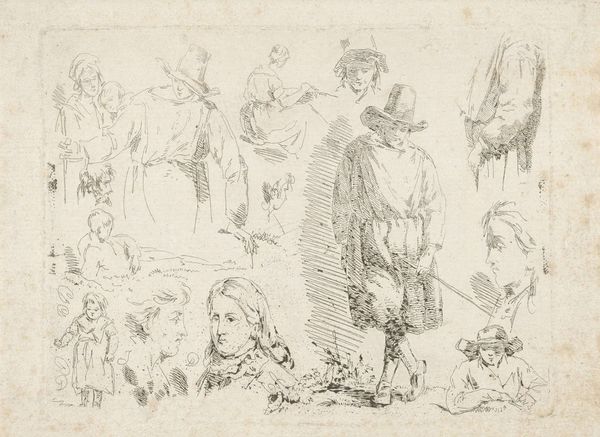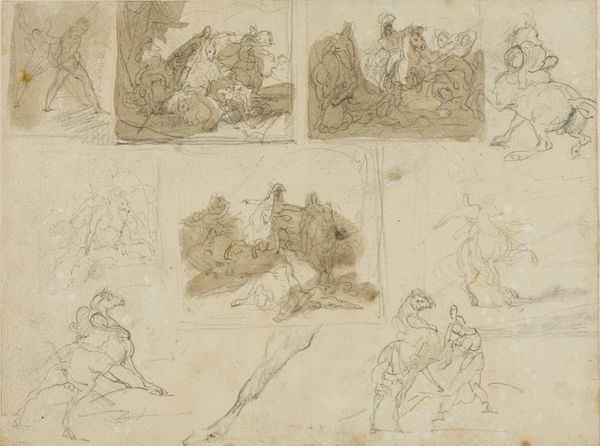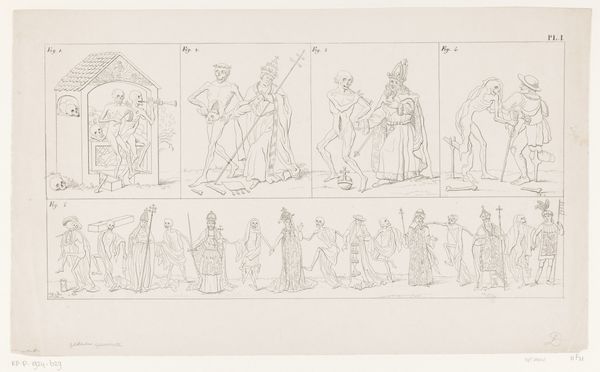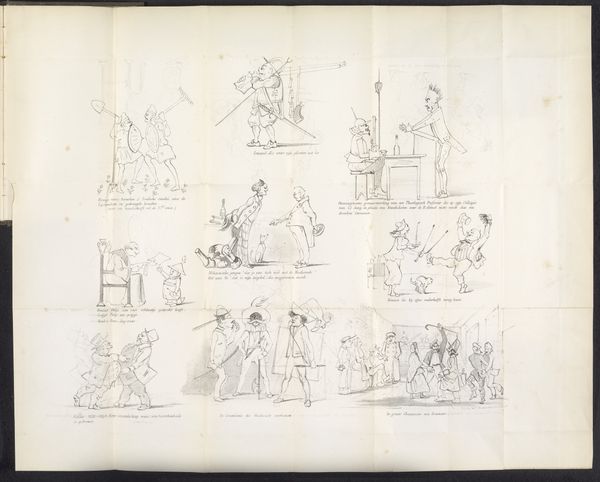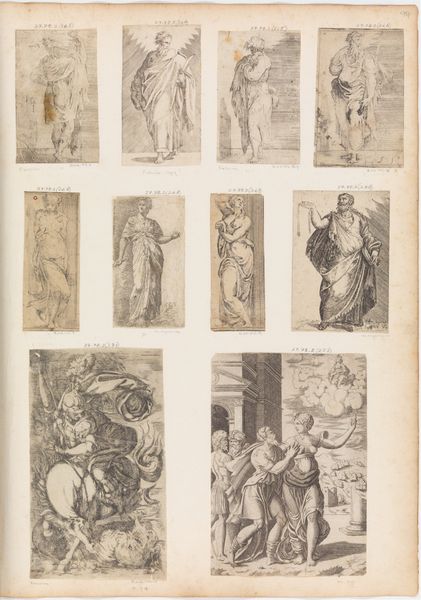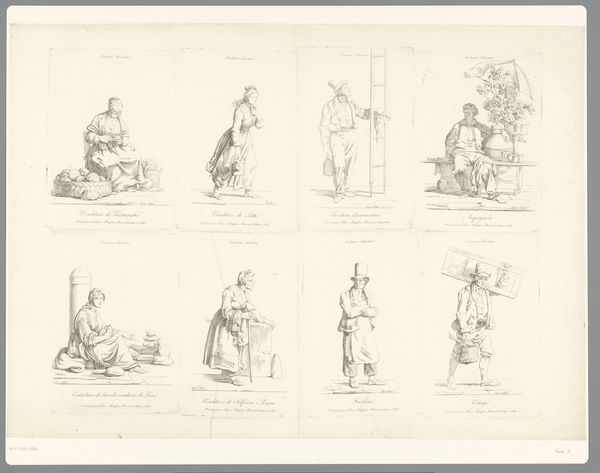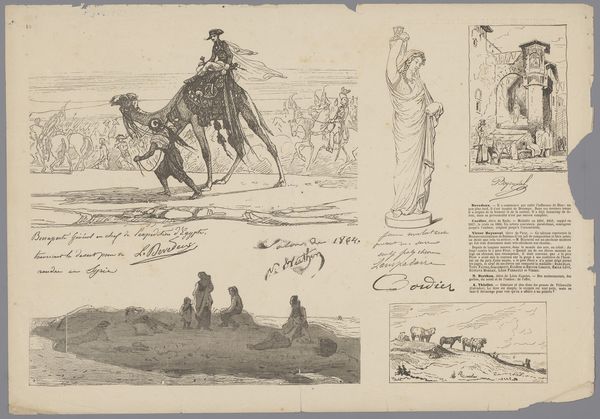
Staande man, karikatuur van een groep mensen, een paard, Andromeda, twee figuren in een werkplaats en een Egyptische figuur op een sfinx Possibly 1864 - 1866
0:00
0:00
drawing, paper, ink, pencil
#
portrait
#
drawing
#
aged paper
#
quirky sketch
#
caricature
#
sketch book
#
figuration
#
paper
#
personal sketchbook
#
ink
#
idea generation sketch
#
sketchwork
#
ink drawing experimentation
#
group-portraits
#
pencil
#
line
#
sketchbook drawing
#
history-painting
#
storyboard and sketchbook work
#
sketchbook art
Dimensions: height 327 mm, width 468 mm
Copyright: Rijks Museum: Open Domain
Curator: What a delightfully busy page. We’re looking at Firmin Gillot's sketch, “Staande man, karikatuur van een groep mensen, een paard, Andromeda, twee figuren in een werkplaats en een Egyptische figuur op een sfinx,” dating, possibly, from 1864 to 1866. It’s an ink and pencil drawing on paper. Editor: My first thought is simply of a record, an archive of visual ideas. It has the appearance of raw, unfettered thoughts made manifest by the artist's hand and laid bare to our inquisitive eyes. Curator: Indeed. The layout does give the feeling of a personal sketchbook. Observe the juxtaposition of a stately draped figure reminiscent of antiquity against a procession of caricatured figures labeled “La Noce”—the Wedding. Notice the artist’s script; it adds a deeply personal layer, documenting an exact moment and thought. Editor: Absolutely. I am struck by how efficiently the artist deploys line and shadow, especially within the context of these miniature sketches. There’s a clear delineation between various subjects. It begs questions about the accessibility and production costs of paper and ink in the mid-19th century: This wasn't simply about aesthetics; it was about the very real cost of visual creation. Curator: The recurrence of mythological and historical tropes, however – the figure of Andromeda, the Egyptian figure on a Sphinx – reveals the endurance and reinvention of these forms across time, the way our understanding of myth continually informs our present-day understanding of art and culture. This speaks to shared cultural touchstones that transcend the immediacy of Firmin's era. Editor: While I appreciate your point, it’s important not to divorce these sketches from their immediate material context. The labor, time, and tools needed for each stroke of ink were significant factors shaping what Firmin Gillot chose to depict. It makes you ponder—did the availability of paper and pencils shape those choices and their historical representations, as well? Curator: Well, the convergence of artistic and mundane, then, enhances this sketchbook's meaning for modern audiences. It encourages thinking on many levels. Editor: Agreed. There is a kind of honest labor present in Gillot's material approach to sketching, and I like it!
Comments
No comments
Be the first to comment and join the conversation on the ultimate creative platform.
